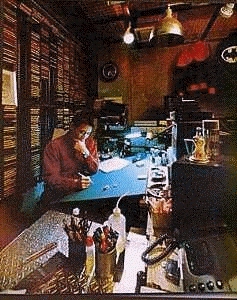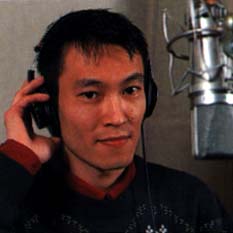
Masakazu Katsura

Masakazu Katsura was born on December 10, 1962 in the prefecture from Fukui, Japan.
After seeing a friend being congratulated because of his drawings, he decided to go in to manga, even though he had no idea how big the market actually was. He was just hoping to make a small name for himself. Katsura won the Osamu Tezuka manga contest a few years later. He had entered because he heard there was a hi-fi stereo system for first prize.
Thus, he started out directly as a manga author (in general, most begin as assistants) and he did some short stories. Although he knew his first series (called Wingman) wasn't great, the 13 manga were adapted into a TV series and gave him some noteriety.
After that, Katsura took a leave of absense and was admitted to a hospital. During that time, he changed his style and as he was rehabilitating, his drawings took on a much greater refinement. He did a couple of short stories and tried to start up a couple of longer manga. But, the public didn't really appreciate them, and they folded quickly. (Vander and Present from Lemon).
In 1989, he came out with 2 collections of his short stories which included a story called Video Girl. It is this idea that launched a new series in Shounen Jump called Video Girl Ai that finally gave him the recognition as a major mangaka that he deserved. His drawings evolved during Video Girl Ai into the look which has stayed to this day. After Video Girl came a short sequel which didn't really pan out called Video Girl Len. Nontheless, with 15 volumes and a 6 episode anime OAV series, Video Girl Ai was a big success and put him above most other manga artists at the time.
By this point, his style was becoming more distinct and graphic. He decided to push into a more science fiction direction after doing character designs for Iria: Zeiram the Animation. This influenced his next project in 1994, a very commercial product called DNA2.
The pretty girls and Sci-Fi caught the public eye for a bit, but it faded quickly and died out after only 5 tenkoubons of manga. Strangely, a 15 episode anime of the series has been one of the biggest adaptions of his work so far.
Trying to revitalise his career in 1995, Katsura tried an almost Batman-like parody called Shadow Lady that unfortunately came off as a bit simplistic and only lasted 3 tenkoubons.
In 1997, Katsura and Studio K2R released a romantic comedy called I"s in Weekly Shounen Jump. The series ran for 15 volumes and has become quite popular with his fans.
Finally, in early 2001 Katsura has returned with a short story about a vampire with healing powers called Dr. Chambari.

Here Katsura is with the director of the movie of VGAI and with the actor that makes Yota´s character.
1981- Wing (first manga)
1982- Transfer Student, Transform! (contest winner)
1983- Wingman (13 Volumes
1985- Vander
1985- Voguman
1986- Pantenon
1987- Present From Lemon
1989- New of New
1989- Video Girl Ai (15 Volumes)
1992- Shadow Lady (Short Story)
1993- Video Girl Novel
1993- Woman In The Man (Short Story)
1994- DNA2 (5 Volumes)
1994- Zetman
1995- Shadow Lady (3 Volumes)
1996- M (Short Story)
1997- I"s (15 Volumes)
2001- Dr. Chambalee (Short Story)

Katsura sang one of the themes for the Original Soundtrack (Ashita wa Ashita)
Thanks to Masakazu Katsura Shrine for the info in english